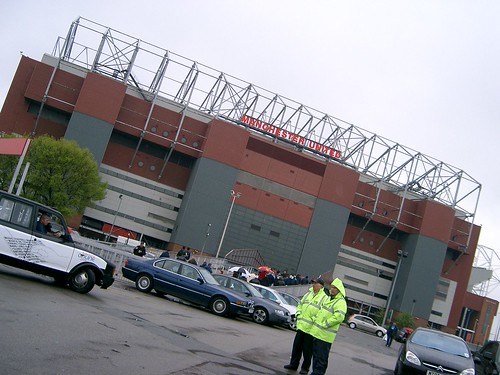Sir Jim Ratcliffe’s plans to redevelop Old Trafford emerge | OneFootball
Old Trafford #OldTrafford

New Manchester United owner Sir Jim Ratcliffe has got big plans in place for the future of the club’s stadium, Old Trafford. According to a report from The Telegraph, the INEOS CEO has ambitions to turn the iconic English stadium into the “Wembley of the North.”
Ratcliffe’s arrival at United was met with much fanfare when it was officially confirmed in 2023. While the British billionaire might only have acquired a minority stake in the club, he will be taking on much of the responsibility when it comes to the direction of the football club.
His takeover is expected to be ratified within the next fortnight, according to The Telegraph, and part of the £1.03 billion deal includes the guarantee of an additional £237 million investment in the redevelopment of Old Trafford. And Ratcliffe has wasted little time in drawing up plans to improve the ground.
Ratcliffe seeking to create ‘state-of-the-art’ ground
Owner opposed to relocation
According to The Telegraph’s report, Ratcliffe wants to build a stadium which rivals Wembley, believing that the North of England should have a stadium that can match the iconic ground in the English capital. He is prepared to lobby the UK government for funds, with Westminster looking to meet their “Levelling Up” promises.
United’s new owner is determined to make this happen, with one source telling The Telegraph that Ratcliffe believes the Red Devils need a new “state-of-the-art” stadium which can rival some of the best in the country.
“We feel there’s a strong argument for the country having a top-class major venue in the North – a Wembley of the North,” they added.
What will come as music to the ears of United fans is that Ratcliffe is completely opposed to the idea of relocating, with Old Trafford being United’s home for the past 114 years. However, he believes that the club could make the most of the land that surrounds the stadium.
Concerns over redevelopment
Structural problems at Old Trafford
However, while fans will not want to move grounds, there is concern among some that simply redeveloping the stadium will not be enough. The Telegraph writes that there is concern about the structural integrity of Old Trafford, with sources stating: “Ultimately you’ve still got a 1910 building.”
Videos of the stadium’s deficiencies have gone viral in recent times. In October 2023, footage emerged of the Old Trafford roof leaking onto spectators below during United’s game against Crystal Palace. That same month, Gary Neville pointed out the roof was leaking yet again as he gave his thoughts on United’s 3-0 loss in the Manchester derby.
– Friday, 3 November 2023
There have been calls to demolish the iconic stadium and build a completely fresh one that would be state of the art. Chris Lee, managing director of architectural design firm Populous, said as much in December 2023, arguing that the building had reached the end of it’s life span.
The cost of an Old Trafford re-build
Building new stadium could cost up to £2 billion
No matter what option Ratcliffe opts for when deciding how to redevelop Old Trafford, one thing is for certain. The cost of either project will cost a fortune.
According to The Telegraph, expanding the ‘Theatre of Dreams’ beyond the 74,000 capacity it currently holds is estimated to cost the club at least £800 million, and has been estimated to take at least eight years. Should they decide to knock down the stadium and build a new one, the cost could be between £1.5 billion to £2 billion.
Those are eye-watering sums, but Ratcliffe is determined to press on. He has held conversations with Andy Burnham, the Mayor of Greater Manchester, about redevelopment plans, and has aos started to explore his potential options.
There is also concern over United’s existing debt, which has exponentially increased under the Glazers. The Athletic believe it stood at over £1 billion in October 2023. The cost of a new stadium would only add to financial concerns, but sources at the club told The Telegraph that increased capacity would be worth the cost in the long run.
“It shouldn’t be a burden on the club because a new stadium should be paying for itself effectively,” they said. “If you’ve got a new 90,000 stadium you’ve got 20,000 new people paying for that stadium.”
View publisher imprintShare this article